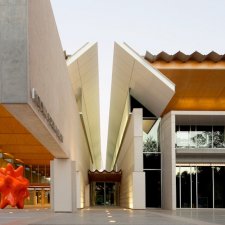The Reverend William Singleton (c. 1804-1875), Anglican clergyman, graduated from Trinity College Dublin in 1826 and was ordained in the city’s Christ Church Cathedral in 1841. In 1849, needing extra salary to support his nine (eventually eleven) children, he came from famine-ravaged Ireland to Victoria as Rector of the parish of Kilmore. The fourth parish to be established in Victoria, Kilmore stretched from the Murray River to Melbourne. Singleton conducted his first service in the school house of the town in 1850; a few weeks later, he opened the school itself. As the Victorian gold rush swelled the colony’s population with chancers and adventurers, Singleton ministered throughout his vast region accompanied by his wife, Frances, on horseback. The foundation stone of Christ Church Kilmore was laid by Bishop Perry in 1857, and the first service was held there four years later. From 1851 Singleton’s brother John, a physician, lived in Melbourne where he promoted temperance, visited gaols, opposed capital punishment and helped to establish Framlingham Aboriginal Reserve. Meanwhile, in Kilmore, William Singleton was involved with the Benevolent Asylum and the Mechanic’s Institute. Popular and genial, dedicated to his flock with no claims to oratorical brilliance, Singleton remained in the parish until 1867, when he moved his family to East Brighton, extending his duties to Cheltenham and Mordialloc. Throughout his time in Cheltenham he was embroiled in arguments about amalgamation of small church schools, which he felt would disadvantage the poor. In 1867 he gained an MA without examination from the University of Melbourne (founded in 1853). He died of a ‘ruptured heart and natural decay’ at 71, but his wife lived another fifteen years. Several of their sons struck gold and became very wealthy.
Collection: National Portrait Gallery
Purchased 2013
The National Portrait Gallery respects the artistic and intellectual property rights of others. Works of art from the collection are reproduced as per the
Australian Copyright Act 1968 (Cth). The use of images of works from the collection may be restricted under the Act. Requests for a reproduction of a work of art can be made through a
Reproduction request. For further information please contact
NPG Copyright.


















